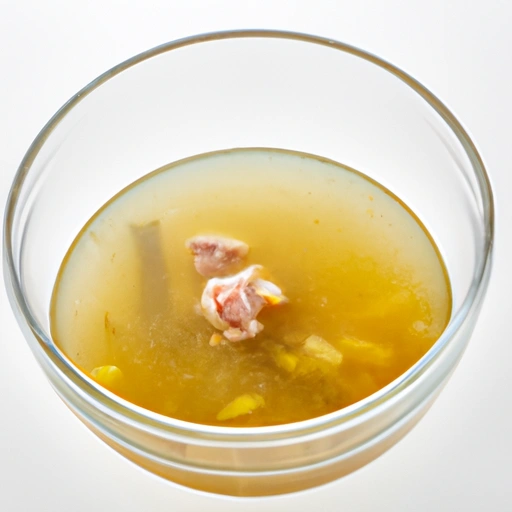Broth
Description

Broth is a flavorful liquid made by simmering bones, meat, fish, or vegetables in water. It's a foundational ingredient in many culinary traditions around the world, often used to create soups, sauces, gravies, and to enrich the flavor of rice or pasta dishes. Broth is typically seasoned with herbs, spices, and sometimes wine, adding depth and complexity to a wide range of recipes. Available in both liquid and dehydrated forms, it's a versatile ingredient that can be easily adapted to suit various dietary preferences and cuisines.
Common uses
Broth is commonly used as a base for soups, stews, and risottos. It's also used to deglaze cooking pans, to braise meats and vegetables, and to add moisture and flavor to casseroles and slow-cooked dishes.
Nutritional value
Calories
Depending on its ingredients, broth typically contains between 5 to 20 calories per 100 grams (about 3.5 oz or 1/2 cup).
Protein
Protein content in broth can vary, with bone broth having more protein due to gelatin released from simmered bones, averaging around 5 to 10 grams per cup (240 milliliters).
Fat
Fat content is generally low, especially in broths made with lean meat or solely vegetables, but can be higher in bone broth or broths made with fattier cuts of meat.
Carbohydrates
Carbohydrates are minimal in most broths, unless noodles, grains, or starchy vegetables have been added during the cooking process.
Vitamins
Broth can contain a range of B vitamins, particularly if meat is included in the preparation. Vitamin content also varies based on the vegetables used.
Minerals
Minerals such as calcium, magnesium, and phosphorus are present in broths made with bones. The presence of other minerals will depend on the specific ingredients used.
Health benefits
Broth is known for its hydrating properties and can be a good source of electrolytes. It is also thought to support gut health and joint health due to the collagen and gelatin from bones in bone broth. Additionally, it can be a part of a balanced diet, providing essential nutrients without adding excessive calories.
Potential risks
While broth is generally safe for most individuals, overconsumption of sodium-rich broths can be a concern for those with hypertension or heart issues. Additionally, broths made from animal products may not be suitable for vegetarians or vegans.
Common recipes
Broth is a key ingredient in recipes such as chicken noodle soup, beef stew, vegetable broth for ramen, and French onion soup.
Cooking methods
Broth can be used in simmering, poaching, braising, and slow cooking. It's also used for sautéing when a lighter cooking medium is desired.
Pairing with other ingredients
Broth pairs well with a variety of ingredients including rice, pasta, poultry, beef, seafood, and a wide array of vegetables and herbs.
Summary
Broth is a fundamental component in many recipes worldwide, appreciated for its ability to enhance flavor and nutritional value. Whether you're savoring a warm soup or enriching a hearty stew, broth offers versatility in the kitchen while also contributing to a well-rounded diet. Understanding its uses, benefits, and preparation can elevate your cooking and provide a comforting, nourishing element to meals.